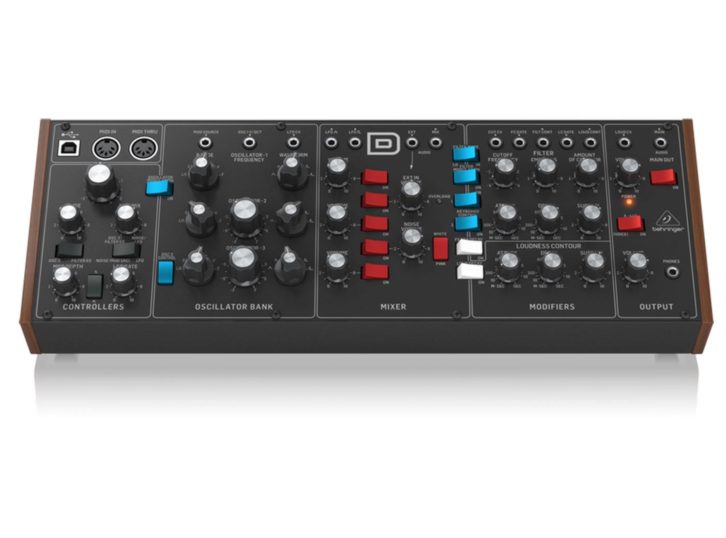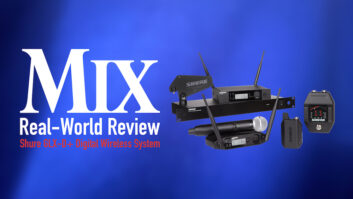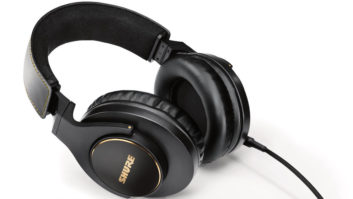
Behringer has started releasing classic true-analog synth designs at a rapid rate; the first one I encountered—and immediately purchased—was the Model D Analog Synthesizer. As an owner of an original Minimoog from the 1970s, I can attest that the Model D is for the most part a dead ringer, with some extra features above and beyond the original. It is, however, more like the Moog Minimoog reissue from 2016, with the inclusion of a low-frequency oscillator and a filter EG modulation source.
On a basic level, it features three voltage-controlled oscillators, filter selectable lowpass or highpass, classic 24 dB voltage-controlled filter with Emphasis, an overdrive circuit, USB-MIDI plus 5-pin DIN In and Thru, Low and High output 1/4-inch outs, and CV connectivity. The classic layout and simple signal path help make this the best bang for the buck I’ve encountered in this new era of inexpensive clones of the classic synths. The CV (control voltage) ins and outs that integrate with Eurorack and vintage synths is what really gives this compact unit a winning profile. Even the Minimoog sound charts book that was shipped with the old Moog Model Ds will fully translate and quickly allow you to get those classic sounds.
The firmware updates that have been released throughout its short lifecycle have also been welcome. For me, pitch-bend range was the most useful, in order to closely emulate the original’s bend range. You can set the pitch bend range up to the amount of semitones you desire, including the common +2 default with most synths. True waveforms and noise sources, including the noise mod source, are fully implemented.
Real-World Review: Roland SE-02 Analog Synthesizer, by Bruce MacPherson, Nov. 1, 2019
The filter EG as a pitch modulation source is wonderful to see, and, of course, the ability to blend the sources simultaneously give this synth its incredible power. A High pass filter is included, as well as a hardwired “output to input” feedback circuit, which help adds cool harmonic distortion and saturation. The trusty, old A=440 sound source makes it easy to tune your three oscillators to unison with a slow, smooth phasing sound and big fat detuned unison, or to tune to intervals for parallel chords.
The Model D is a great educational tool that not only sounds great, but will give you a solid foundation for subtractive synthesis without breaking the bank.
Behringer • www.behringer.com







